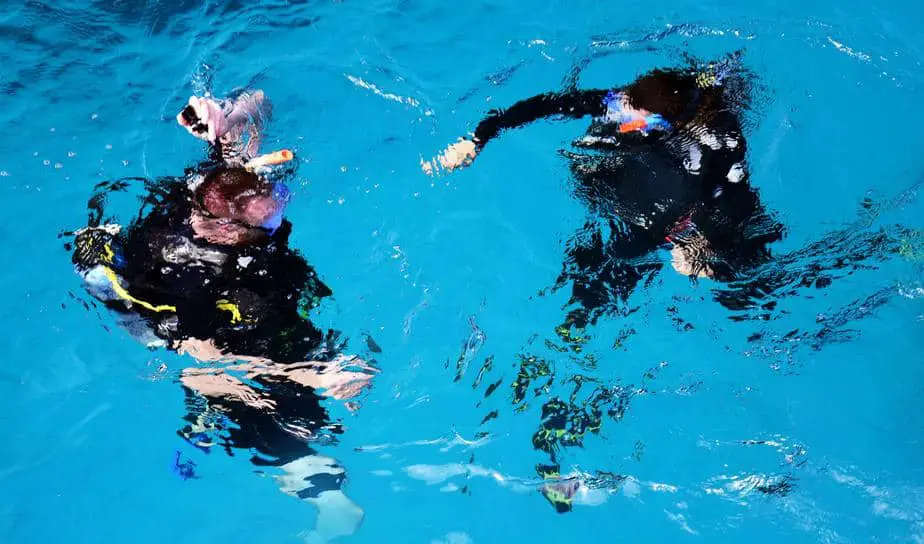Scuba diving is like exploring an entirely new underwater world with locations and aquatic life that you’ve never seen before. With water covering over 70% of the planet, why limit yourself to only the remaining 30%? Knowing how to scuba dive safely can give you the freedom to explore places that used to only exist in your imagination.
Furthermore, all scuba divers could use a refresher from time to time. Especially if you only scuba dive while on vacation, the many months when you aren’t diving might cause you to forget some basic yet vital information. Some divers admit that each year, it’s like they are learning how to scuba dive all over again.
As you rack up the dives, you will begin to have more confidence and enjoy diving more. You’ll also be a much safer diver and perhaps tackle harder dives. Until then, there’s nothing wrong with brushing up on the basics and reviewing what you were taught in your certification class from time to time. In this article, we’ve put together some scuba diving tips for beginners so that you can be prepared for your next dive.
Scuba Diver Safety Tips
Get certified locally or abroad
If you’re looking to get certified, if possible, get certified at a local dive shop. Sometimes this isn’t possible and you have no choice but to do your Open Water diving certification while on vacation. In that case, check the PADI, NAUI, or SSI websites to see which dive centers are available so that you can ensure your training is conducted in a professional and safe manner.
We recommend taking your course locally before a big trip. When you resort to day courses on vacation, you’re going to feel extremely rushed. You may not have enough time to retain the information you were just taught. You may feel scared the entire time and panic when you don’t know what to do. You will also be limited by the depth and the types of dives you can do when you’re a student.
In recent years, scuba diving certification agencies have become more flexible with the way they run their scuba diving courses. Students can complete their studying and pool dives with a local dive shop and then do their 4 open water dives with another dive center on vacation. This gives you the best of both worlds where you can study at home and finish your certification in clear, tropical waters.
Pick a dive shop
In our article discussing the differences between PADI, NAUI, and SSI certifications, the conclusion we came to was that it doesn’t matter so much which certification you get but rather the quality of instruction you receive. In other words, you should be looking for a good and reputable dive shop to ensure you are receiving proper instruction and that you’re safe the whole time.
This is important not just for when you’re trying to get certified, but also when you’re planning a trip that involves diving. You can have peace of mind knowing that their standards are high, the instructors/divemasters are good, and any gear you rent out is reliable. You can use Google, TripAdvisor, or reach out to Facebook groups to get honest feedback on various dive shops. For a new diver, you want to make sure that good things are being said about your instructor/divemaster.
Check your gear
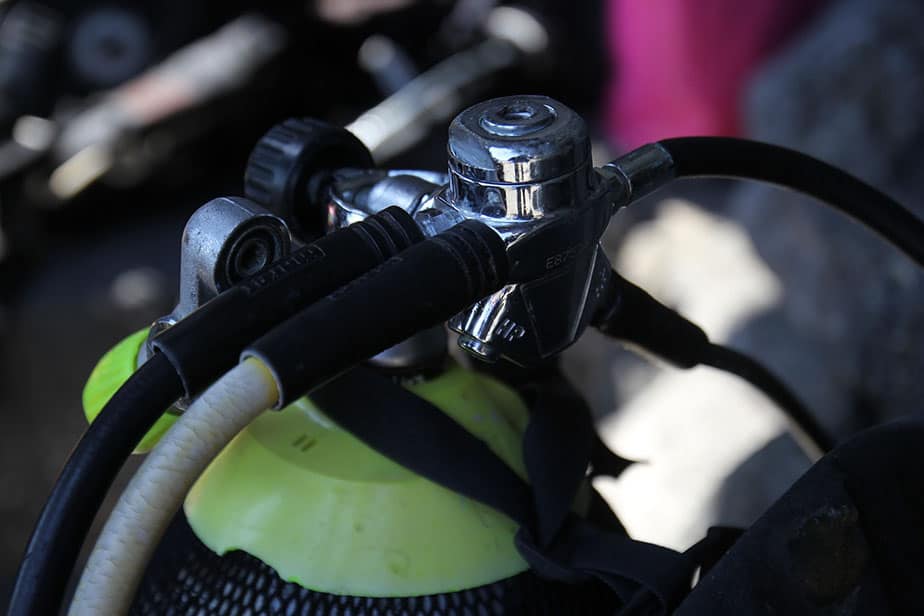
It doesn’t matter how much skill you have, your survival underwater is dependent almost entirely on your gear. Thus, don’t be lackadaisical when checking your gear. Be extremely thorough when checking your and your dive buddies’ gear. If there is a gear malfunction, it could affect both of you. If you have any questions about how to use your gear, ask it. Many scuba diving accidents happen not because of equipment malfunction but rather user error.
You should especially know how to dump your dive weights and deploy your SMB safely. You should also know where the dump valves are on your BCD. Be especially vigilant when you are preparing for an unusual dive, such as a night dive. For instance, did you remember to bring your dive torch, a back torch, and a chemical light? Are the batteries fully charged? Is your dive computer calibrated correctly? And so on.
Get to know your divemaster
It’s always nice to be friendly with the people you’ll be diving with, especially your divemaster. Get to know their name and let them know that you’re new to diving and any concerns you may have about the dive. For instance, you may have difficulty clearing your ears sometimes. Letting the divemaster know will help them accommodate your needs.
Most scuba divers and divemasters are very friendly and will go out of their way to help you. Especially if you’re a new diver, the dive master may even offer to buddy up with you. This can give you peace of mind and help you feel safe as you get more diving experience under your belt. Lastly, you should remember any distinct markings or colors on your divemaster’s wetsuit. This can help you find them faster in the event of an emergency.
Pay attention to the briefing
Before embarking on a dive, the divemaster will provide a comprehensive overview of the dive you’re about to go on. They’ll talk about the route the group will take, the marine life you’ll see, and answer any questions you may have. If you have any gear questions, don’t be embarrassed and just ask. You don’t want to endanger your life just because you were too shy.
Furthermore, each dive spot has different water conditions and marine life. It’s helpful to know what kinds of animals and fish are rare so you can keep your eyes out for them. Learning about the currents can prepare you for what to do in case you’re caught in one.
Make sure you know what the hand signals are so you can communicate with the divemaster and your co-divers. Pay attention to what the plan is if someone gets separated or an emergency arises.
Never hold your breath
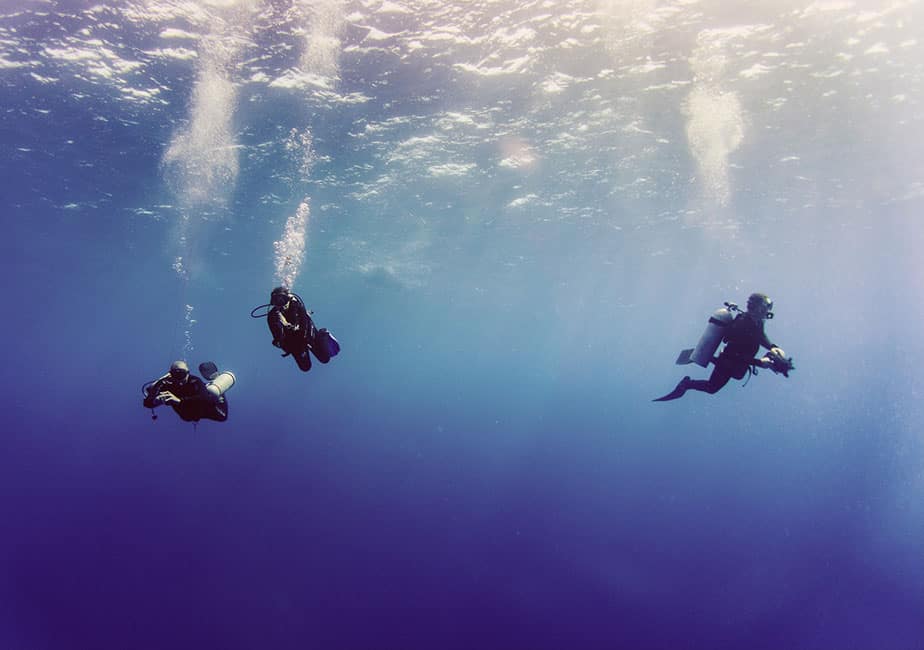
This is the golden rule of scuba diving and one of the first things you’ll learn in the open water course, for good reason. Holding your breath underwater can lead to lung overexpansion which can be fatal.
According to Boyle’s law, the air in a diver’s lungs gets compressed as the water pressure increases while descending, and the air expands as the pressure decreases on the ascent. If a diver is continuously breathing then there are no issues because the air has a place to escape to as it expands. However, if you were to hold your breath, the air inside your lungs will keep expanding with nowhere to go and can rupture your lungs.
This type of injury to the lungs from over-pressurization is referred to as pulmonary barotrauma. In the worst cases, air bubbles can leak out from the lungs and enter the bloodstream. Once an air bubble has made it into the bloodstream, it can block blood flow to your organs and this is known as an arterial gas embolism, which is fatal.
You don’t even have to dive very far for the changes in water pressure to cause lung overexpansion injuries. For this reason, you should never hold your breath while diving, even for shallow dives. Never hold it while descending or ascending. The way to avoid lung injuries is easy: breathe normally at all times.
Remember to equalize
Another basic but important beginner scuba diver tip is to equalize every few feet on their descent. That means to equalize the pressure in the dive mask to prevent mask squeeze, as well as to equalize the pressure in your ears to prevent ear barotrauma. If you’re not able to equalize the pressure in your mask or ears, then make your way back to the surface. Do not try to endure it.
Equalizing your mask is very simple. All you need to do is occasionally exhale from your nose. Oftentimes you don’t even need to consciously think about it because equalizing your ears can cause some air to leak out from your nose and equalize the mask. Equalizing your ears can be a bit trickier because there are so many ways to do it, but the easiest way works just fine.
The most common and straightforward way to equalize your ears is with the Valsalva maneuver. You probably know this method as the one where you pinch your nose and slowly try to exhale through your nose. When you start to feel pressure in your ears as you descend, performing the Valsalva method should help you feel a release or pop in your ears.
You may have problems clearing your ears if you are congested due to a cold or sinus infection. In this case, hold off on diving until you’ve recovered because your eustachian tubes (the tubes connecting your middle ear and your upper throat) will not open properly. Diving while sick is generally a poor decision anyways, so don’t do it.
Some additional tips to help with ear equalization are to swallow when pinching your nose and to move the jaw side to side. Furthermore, don’t wait until your ears are in pain to equalize. You should stay ahead by equalizing whenever you feel the pressure increasing. This process will become automatic once you have enough diving experience.
Prevent mask fog
A common issue that affects both scuba divers and snorkelers is the issue of your dive mask fogging up. This obstructs your field of vision which is not only annoying, but potentially dangerous if you can’t see your surroundings. Some divers swear that spitting on the mask lens is enough to prevent the mask from fogging up, but your mileage may vary.
When you buy a new mask, you should first perform some pre-use cleaning. Consult the instruction manual for what to do. Some masks are already pre-treated with an anti-fog coating so it’s already good to go. If the mask does not come with any defog coating, then we recommend first cleaning it with a toothbrush and toothpaste and rinsing well afterwards.
Make sure that only the toothbrush comes into contact with the mask lens. Keep your fingers always from it because the natural oils on your fingertip can transfer to the lens. You should also clean the mask skirt so that it is free from oils as well. The oils can interfere with the anti-fog solution so it’s important to do this cleaning.
Finally, it’s time to apply some defogging solution. We have written about the best anti-fog options here. To sum it up, you can use a commercial defogger which is widely available at any dive shop. Or, you can use diluted baby shampoo or even just coat it with your own saliva if you didn’t bring anything with you. After application, dip your mask into the water once and then put it on.
If you will do multiple dives in a day, apply your preferred defogging solution before each dive. If all else fails, you can take your mask to a dive shop to get it burned. Burning the lens will strip off the thin film on the mask lens and this can make it easier to apply a defogging solution. You could also burn the mask yourself at home, but you do so at your own risk.
Dive within your limits
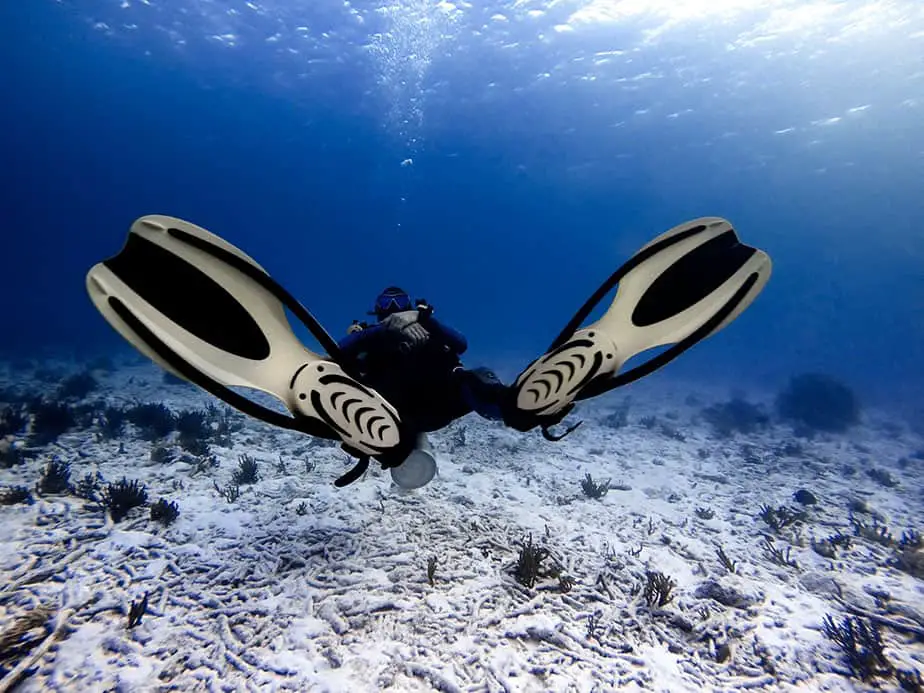
While diving should be enjoyable, it should also be safe. You should know what your limits are and follow your dive plan. For example, you should not be exceeding your depth limit on a whim just because you’re feeling overconfident. Conversely, don’t succumb to peer pressure. If you aren’t mentally or physically capable of what your dive buddies are doing, then call it.
If the weather conditions are rougher than you expected, don’t be afraid to cancel the dive or ask for a location change. The normal dive site may be within your diving capabilities one day and too dangerous the next based on the fluctuations in the surface conditions, currents, and temperature.
Don’t try to dive beyond your qualification level. If all you’re certified for is open water diving, don’t try to go on a wreck dive, deep dive, cave dive, or any dives involving the use of enriched air. You lack the specific training to safely handle these situations and may even endanger the lives of those around you.
Plan your dive, dive your plan
A lot of planning goes into a successful dive. Taking the time to figure out your maximum time and depth before submerging will keep divers from overextending themselves. Agree on what to do in lost-diver and emergency situations.
Depending on where you’re diving, the procedures may be slightly different. If you don’t have a guide, ask a local how they would navigate the site so you have some idea of what to expect. Know how to make your way to the exit point.
If you’re paired up with a stranger, make sure you two are on the same page when it comes to hand signals. Depending on where your buddy is from, the hand signals may be different. You don’t want to have a breakdown in communication in the middle of a dive.
Adhering to your plan can give you peace of mind. It can help keep your ego in check and help those who tend to push themselves too hard stay within their limits. For the anxious, having a solid dive plan means there’s less to think about and more attention can be spent on the actual dive itself.
Bring backups
Equipment malfunctions can happen suddenly and unexpectedly. You can have equipment that passed your pre-dive inspection fail you during the dive. For this reason, you should always have a backup of all your crucial diving equipment. For instance, a backup dive computer, spare air tank, extra dive masks, another diving torch, and so on.
One of the most common points of failure is with dive computer batteries. Even if you have a backup dive computer, you should also have a physical gauge. Many SPGs also come with a depth gauge, so that’s two birds with one stone. With a backup dive computer, you have to make sure that it’s water-activated and that it uses the same algorithm as your primary one so that the dive profiles are similar.
Having a spare mini air tank can be life-saving for you or a dive buddy whose regulator or air tank is leaking. Ideally you never need to use it; it is for emergency purposes only. It’s not an excuse to extend your dive time for longer just because you now have extra air with you. Having an extra dive mask, dive torches, and so on is pretty self-explanatory as to why it’s a good idea to have redundancies.
Monitor your gauges
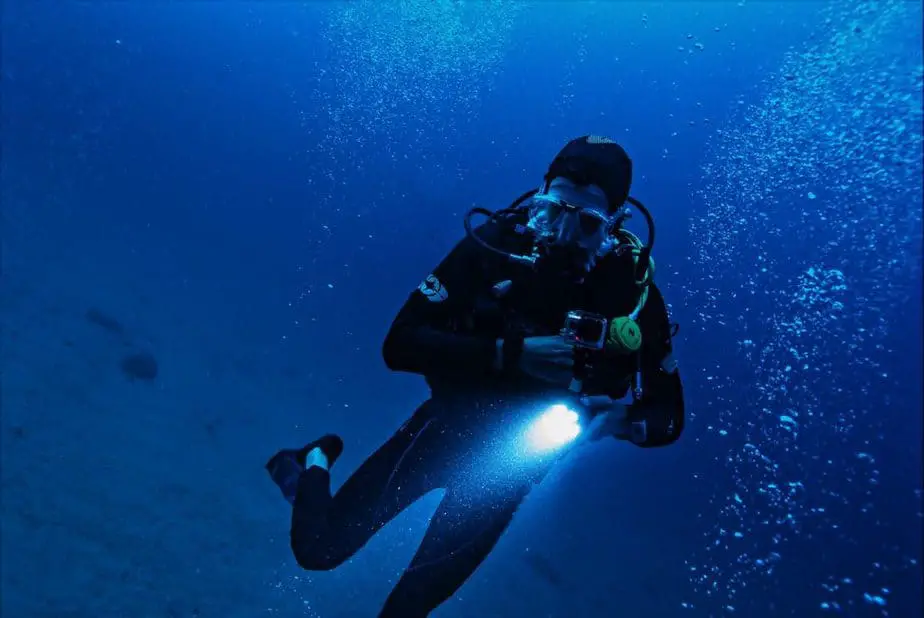
You are responsible for tracking your own gauges. Do not get so distracted that you forget to do this crucial step. Most of the time, a divemaster will keep you from diving deeper than the maximum depth you are certified to do. With that said, if you feel uncomfortable with how deep you are going then call it.
We’ve heard a story from a group of divers who relied too much on their divemaster to track the depth, only for them to realize that they were down to 90 feet when their Open Water Certification was only rated for 60 feet. There was no malicious intention, it just appears that some divemasters are more relaxed than others.
In a similar vein, you should be monitoring your SPG like a hawk. Do not rely on a timer to let you know when you should begin your ascent; actually track your remaining gas in real-time so that you have the most accurate readings. The issue with relying on a timer is that it doesn’t account for fluctuations in gas consumption. Sudden increases in physical exertion can consume the air rapidly.
A good rule of thumb for absolute beginners to follow when it comes to air supply management is the rule of thirds. This rule states that one third of a diver’s air supply should be allocated for the outward journey, another third for the return journey, and the final third should be used as a safety reserve. This rule is most often used for advanced forms of diving such as cave and wreck diving where the risks are high. If you’re a beginner, the risks are high.
For a typical recreational dive, most divers should begin their ascent when the SPG reads 500 PSI or 50 bar of air in the tank. For a 3000 PSI tank, that means when there is around 16% of the air in the tank remaining. Most SPGs will have a red section that the hand will eventually point to which indicates this.
You need to give yourself ample time to resurface. Remember that you need to ascend slowly and to perform a safety stop. Consider that you also have to account for emergencies like if your dive buddy needs extra air or if something delays your ascent. These precautions are what a safe diver should do to handle anything unexpected.
Master buoyancy control
Buoyancy control is one of those things that you should always be working on. Mastering it takes years of experience and deliberate practice. It’s something one should always strive to perfect. Don’t feel bad if you’re not that good at it starting out, but try to work on it.
Why make such a big deal out of buoyancy? Well, it helps you go up, go down, and maintain your position so that you can get to your desired depth and explore without any drastic changes in depth. The crucial tool to help you control your buoyancy is your buoyancy control device (BCD). If you inflate your BCD too much, you’ll rise. If you deflate it, you’ll sink. By default, you’re going to be rising (positively buoyant) so you need dive weights to help you descend.
Getting the dive weights just right is an important step for buoyancy control. It’s so important that the divemaster will help you figure out the correct weight. They will bring extra weights in case other divers need them. Too much dive weight and all you’ll do is sink. Too little, and you’ll always be rising up. The correct amount of weight makes a huge difference.
Once you have descended to the desired depth/bottom of the ocean floor, inflate your BCD slightly. You don’t actually want to touch the floor. When you’re neutrally buoyant (neither rising nor sinking), your breathing becomes an important part of buoyancy control. For instance, if you take a deep breath, you’ll rise slightly, and when you exhale, you’ll slowly be lowered. This is a great way to float above coral so that you don’t make contact with them.
When you’re just starting out, you’ll probably be relying on your arms to make micro-adjustments to your positioning. Ideally, your arms should be kept still to conserve energy. Furthermore, having your arms flailing around may cause you to hit other divers, marine life, or coral. As you gain experience, you’ll get a sense of how to maneuver by just using your fins, controlling your breathing, and inflating/deflating the BCD.
Reduce air consumption
Inexperienced divers will consume air a lot faster than veteran divers. There are many factors that go into this, but it’s often to do with performing unnecessary, inefficient movements and being nervous. The general guideline is that when a diver is running low on air and needs to surface, then the whole group goes up as well. This means if your tank is still half full but your dive buddy is in the red, you need to go up with them.
In order to have the longest bottom time, all the divers should strive to keep their air consumption low. This means not exerting themselves unnecessarily and to keep their breathing controlled.
Unfortunately, men are at a disadvantage when it comes to controlling their air consumption. From the 1992 issue of Underwater USA, Dr. Julie Bookspan writes: “Male’s lungs are bigger, using more air with every breath. Higher consumption, sometimes two times or more is documented in males, especially large males. Men are more likely to run out of air on a comparable profile than their woman buddy.” Anecdotally, we found this to be true as well.
So what can you do? Regardless of gender, all divers need to stay calm and breathe deeply and slowly. It is reminiscent of meditating, if you’re familiar with what that’s like. Maintaining even and slow breathing keeps air consumption as low as possible.
On top of that, divers must learn to keep their movements to a minimum. Physical exertion causes the muscles to use more oxygen and elevates the heart rate. For this reason, mastering buoyancy and knowing proper finning technique is crucial. Unless there are strong currents or something physically in your way, take it easy while underwater.
Dive with a buddy/group
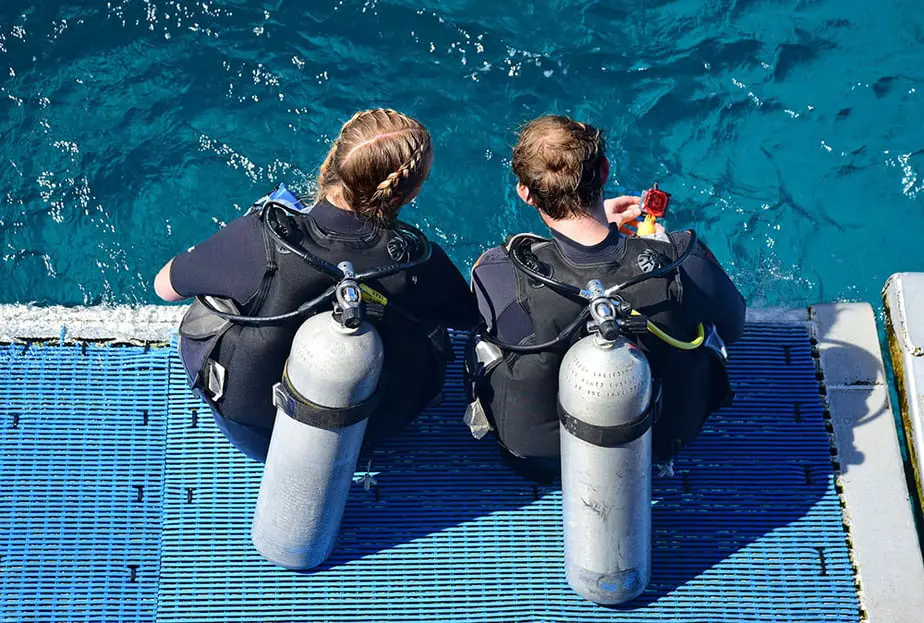
Whether it’s your first dive or your hundredth, it’s never a bad idea to dive with a buddy just in case of an unexpected emergency. If your dive buddy is a good friend, then you can share in this wonderful diving experience together and reminisce about it in the future. If you booked a dive through a dive shop, then you will be paired with someone so that you aren’t diving solo.
Particularly when you’re just starting out, you’ll want to learn how to be a good dive buddy. Review the basic hand signals so you know how to communicate, make a plan for what happens in case of an emergency, and make frequent eye contact with your buddy during a dive. Always stay within eyesight of one another so you don’t get separated.
Furthermore, be considerate. You and your dive buddy are putting your lives in each other’s hands. Before you dive in, do a check of your buddy’s equipment and have your buddy check yours. Don’t get impatient if your buddy is lagging behind. If your partner runs out of air first, then accompany them to the surface even if your tank still has plenty of air left. The point is to help each other out, and you never know when the roles will be reversed in the future.
Stay calm
Starting out, your heart is probably going to feel like it’s beating out of your chest with how nerve-wracking it can get. There’s so many things to remember, and maybe you’re worried about what’ll happen if your regulator gets knocked out of your mouth or your dive computer suddenly dies or a current sweeps you away.
This is another reason why breathing deeply and slowly is so important – it also has a relaxing effect. Furthermore, the more experienced you get with diving, the calmer you’ll be each time. To help you calm your nerves for the first few dives, we recommend focusing on your breathing. Consider watching a few videos on meditation and pay particular attention to how they breathe while meditating.
Furthermore, try not to have tunnel vision. Always be looking around you and occasionally looking at your partner. If you are too tense and aren’t paying attention to your surroundings, that’s how you can get separated from your group. You might also miss out on seeing some big fish, like sharks and manta rays, if you are too focused on other things.
Keep in mind, for those who are naturally anxious or suffer from PTSD, it’s actually been found that scuba diving can bring relief to those who are suffering from PTSD. Some divers have found the ocean to be a tranquil, peaceful place where they can focus on their breathing much like they were in a meditative state. If you’re freaking out, try to channel this kind of energy by focusing on taking slow and deep breaths.
Ascend slowly
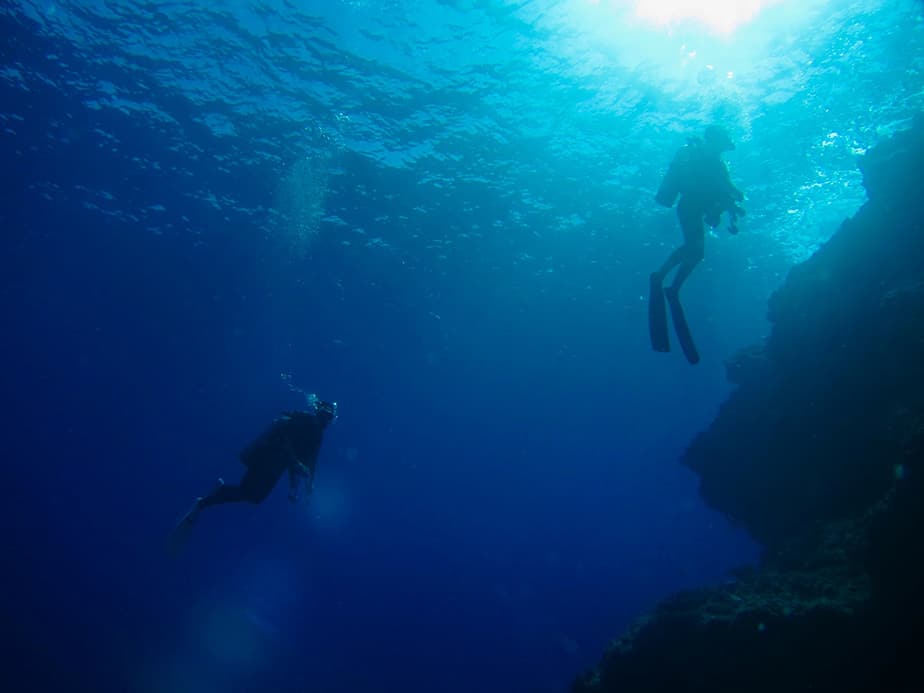
Almost as important as breathing technique is how you ascend once you’re done with the dive. The general rule is to do everything slowly. You descend slowly, you breathe slowly, you explore slowly, and most importantly, you ascend slowly. Do not exceed an ascent rate of more than 9 meters (30 feet) per minute. If you have a dive computer, it will give you plenty of warnings if you’re going too fast.
Why must you ascend so slowly? The main purpose is to avoid decompression sickness, also known as the bends. When you ascend, the water pressure decreases, and the nitrogen absorbed into your tissues and bloodstream starts to dissolve. If you ascend too quickly, nitrogen bubbles will form (much like when you shake a soda bottle) and these bubbles can wreak havoc on your body. We recommend reading this article to get an idea of how deadly decompression sickness is.
Remember to completely deflate your BCD before starting your ascent. Do not use the inflator button to help you rise up. You should be slowly finning your way back up and stopping whenever the dive computer tells you to. In the final 15 feet stretch, unless there’s a good reason not to, you should perform a 3-5 minute safety stop to drastically decrease your chances of experiencing DCS.
Establish positive buoyancy at the surface
If you thought scuba diving was only dangerous underwater, you’d be surprised. A sizable portion of fatalities stem from problems that have happened on the surface. The most common issue is when a diver is using too much dive weights. They struggle to stay afloat at the surface, using up precious energy to stay afloat, and drown.
For this reason, it is recommended that divers fully inflate their BCD once they have reached the surface. After a long dive, you may be tired or possibly panicking if you had to surface in a hurry. If necessary, consider dropping your dive weights if for some reason the BCD isn’t enough to keep you afloat. Establish positive buoyancy at the surface will help conserve energy, calm you down, and minimize risks.
Parting Words
There are many tips to keep in mind, however staying safe while diving is actually very simple. With enough practice, common sense, and confidence, you can mitigate most risks. As long as you stay calm, perform each action methodically, dive with a group, and follow the safety guidelines, you will be kept safe. On top of that, you’ll also be able to relax and enjoy the beautiful experiences that scuba diving has to offer. That’s why you dive in the first place, right?

